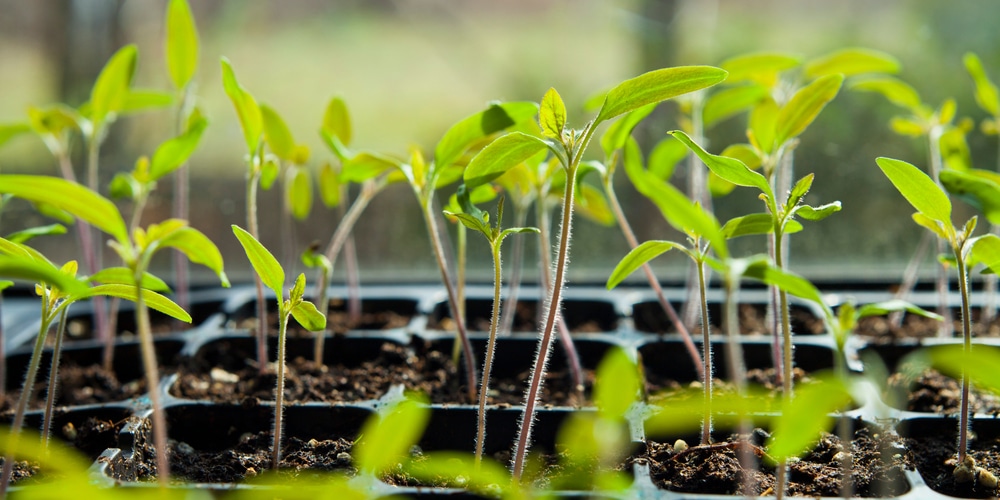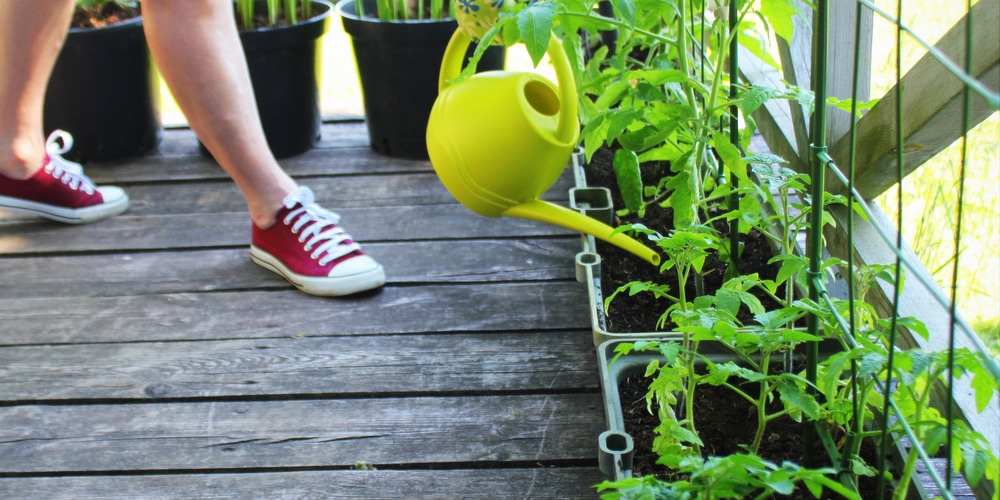We often picture our tomatoes as red, plump, and juicy, and have the same expectations when growing them. However, it always doesn’t pan out this way and your tomatoes may appear to be severely undersized. You then wonder, ‘why are my tomato plants staying small?’
Why Are My Tomato Plants Staying Small?

The primary reason why your tomato plants or fruits stay small is that they’re stressed out. Stress can come from a number of things, including extreme heat, not enough water, lack of nutrients, pests, and diseases, and pruning. Let’s explore each reason and detail possible fixes for each problem.
Extreme Heat
Tomatoes aren’t that picky when it comes to environmental temperature, but they like to observe what’s called ‘the goldilocks principle’, which is not too hot, nor too cold. Tomato plants thrive in ranges of 65 to 85 degrees F, or 18 to 29 degrees C.
Outside these ranges, tomatoes will start to get stressed and will show their displeasure by taking longer to form flowers and fruit. Above 90 degrees F, tomato plants will simply stop producing fruit and stay that way until temperatures cool down a bit.
To combat extreme heat it’s best to put your tomatoes in a location that gets morning light and shade in the afternoon. If your region or climate is too hot to grow tomatoes, then you can add mulch, or build a greenhouse or shade structure to lessen the heat.
Improper Watering
Watering or the lack of it is a common culprit of stress in tomato plants. Without adequate irrigation, tomatoes won’t have the means to set fruit or grow their existing ones to a respectable size.
As a general rule, tomato plant soil should be kept moist but not waterlogged. They do well in self-watering systems and pots, and well-drained medium.
Don’t wait until the soil becomes bone dry- feel the top inch or two and water if it’s dry to the touch. Water first thing in the morning to prevent diseases, and you can add an inch or two of mulch to keep the soil moist for longer on hot summer days.
Not Enough Nutrients
One major requirement in growing tomato plants is to have well-drained and rich soil. The more compost and organic matter it has, the better. It’s believed that tomato fruit quality will depend on how well the plant is watered and if it’s getting the right amount of nutrients and sunlight.
Typically, you won’t need to feed your tomatoes fertilizer if you give it lots of aged compost and similar material.
However, you can supplement with ammonium nitrate or a balanced 10-10-10 fertilizer when you see the fruit grow to the size of a golf ball, and again after 4 weeks. This should be enough to remedy the problem of stunted tomato plants.
The Presence of Pests or Diseases
Bacterial canker, verticillium wilt, fusarium crown rot, blossom-end rot, and cucumber mosaic virus are just some of the diseases you’ll need to look out for. In the pest department, you’ll have to deal with stink bugs, psyllids, flea beetles, hornworms, and aphids.
Make it a habit to inspect your tomato plants’ leaves, stems, fruit, and soil for the presence of these pests and diseases and apply the correct fungicide or treatment.
May Need a Bit of Pruning
Tomato plants can certainly use some pruning here and there so they can put their effort into growing big fruits.
Large and mature tomatoes can be pruned in a way that side shoots and stems that don’t produce fruits are removed.
You can also cut off ‘suckers’, or extra growth in-between established branches that take away much-needed energy when you spot them.
Related article: When to Plant Tomatoes in Florida?
